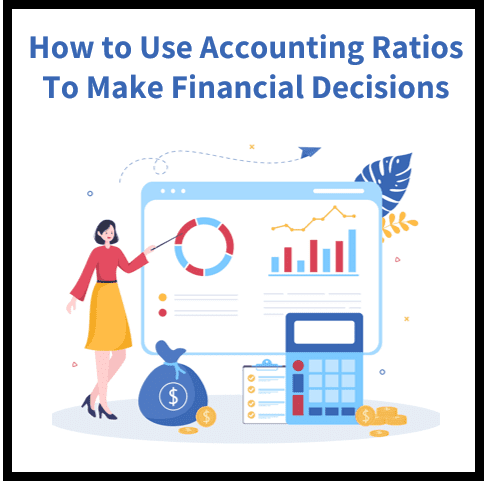When it comes to making financial decisions, there are a number of variables you need to consider. For example, how much cash do you have? Do you have any credit card debt? Do your expenses seem to be growing at an alarming pace? Do you have any special needs that could impact your ability to make payments on time or repay debt?
If you’ve ever struggled to make sense of financial statements or arrived at a decision about your personal or business finances without first understanding the numbers, you’re not alone. In fact, financial illiteracy is widespread. Unfortunately, because financial literacy is so important, most people are simply not equipped to make their own financial decisions.
Organizations that offer financial education and assistance are becoming more widespread, and more people have access to the information they need to make better financial decisions. That’s what this article is all about. It’s going to explain why you need to understand financial ratios when making business decisions, how to use accounting ratios to make financial decisions, and what financial ratios are.
Image Source: Flickr
What are Accounting Ratios?
An accounting ratio is a ratio you use to determine how much money you have in circulation relative to your total assets. It’s usually expressed as a percentage and is used to determine whether your business is in profit or cash flow deficiency. Accounting ratios can help you understand your financial health by applying the same metrics you use to analyze your business’s cash flow to your personal finances. The ratio could be gross income, number of customers, number of employees, total assets, or total debt. When you examine your financial statements in the same way, you can see if there are similar trends across your different accounts.
How to Use Accounting Ratios To Make Financial Decisions
Accounting ratios are used to make financial decisions. They’re not used to determine what to do with your money—that’s theinalgebra. Instead, accounting ratios help you understand your financial health. You can use the information in the ratio to determine how you compare to other businesses in your industry, the overall health of your business, and even your personal finances.
Here are 3 scenarios where accounting ratios could come in handy: Scenario 1: You’re in the process of buying a new computer. You notice that the price on the new model is $2,000 more than the old one. You have to buy both new computers and a new monitor so that one person can use them. To solve this cost dilemma, you could look at the following ratios to see how you stack up to other businesses: New Computer Price/Gross Income = ratio Used to determine how much you should spend on the new computer.
You have a higher ratio because you’re spending more than you need to. New Computer Monitor Price/Gross Income = ratio Used to determine how much you should spend on the new computer monitor. You have a higher ratio because you’re spending more than you need to. New Computer’s Total Value = ratio Saves you money because you’re getting a good deal on the new computer.
What financial ratios are and how they’re used
Accounting ratios are used to make financial decisions, but they’re not the only numbers you need to think about when making financial decisions. Other numbers you need to consider are cash flow and profitability. The profitability ratio looks at how much money your business makes, both during the period you’re looking at and immediately after any extraordinary expenses such as a big bill that comes in.
The following are some key financial ratio details: Accounting Income/Expenses – How much money comes in and goes out of your business each period. Debt/Equity – How much of your business’s total capital is made up of debt and how much is equity (cash). Sales/Cash Flow – How much of your business’s income comes from selling products and how much is from earnings before interest and taxes (EBIT).
Why Do You Need to Know About Accounting Ratios?
The information in financial ratios is critical when it comes to making financial decisions. That’s why starting to familiarize yourself with accounting ratios is important. Knowing how your business is doing financially can help you make better business decisions. First, it can help you spot problems in your business that could be causing issues with your company’s cash flow. If you notice that your sales are not keeping up with your cash flow, then you need to focus on fixing that problem. Second, it can help you understand your personal finances better. If you know how your business is doing financially, you can use that information to help make purchases that are similar to yours. Knowing how you’re doing can also help you spot opportunities to save money that may not otherwise occur to you.
Fundamental Accounting Ratios
One of the first things you need to understand about accounting ratios is that they measure the same thing that financial statements measure. When you examine your business’s financial statements, you see whether or not there is money coming in and going out. If there’s no cash coming in, then you have a problem.
You can use the following accounting ratios to determine your company’s health: Current Ratio – This is the money you have right now divided by the money that was in your business a short time ago. Cash Flow ratio – The cash flow from operations is divided by the total amount of cash flow from operations. Investor’s Interest Rate – This is the interest you charge your investors.
What are the Different Types of Financial Ratios?
When you’re looking at financial ratios, you need to keep in mind that they’re not all the same thing. Some ratios measure cash flow and profitability, while others look at debt and equity. Here are some key financial ratio details that you need to know about: Debt/Equity – The percentage of equity (i.e., ownership) that you have compared to the amount owed to shareholders.
Debt to Income (or Net Debt/Equity) – This is the amount of debt you have compared to how much equity (or profit) you have. Equity to Income (or Net Equity) – This is the amount of equity (or profit) that you have compared to the amount owed to shareholders. Sales/Cash Flow – The amount of sales or cash flow indicates how much of your business is consumed by your customers or brought in by your distributors.
Why Is Financial Literacy Important?
As you have probably gathered from the above paragraphs, financial literacy is something that everyone needs to have the ability to make financial decisions. People who are financially challenged often find it hard to make decisions for themselves. They may lack the cognitive ability to make certain types of decisions, or they may lack the ability to make sound financial decisions.
This can lead to them making bad financial decisions and hurting their financial situation. Making sense of financial statements can be difficult for people who are not very familiar with them. This can make people hesitant to make decisions that could have a significant financial impact. This can include making major purchases, such as a house or a car, or even making a small change such as changing a lightbulb color.
Key Takeaway
If you have not begun to understand financial statements, or if you’re not sure what to do next, the Financial Literacy Project is a great place to start. The education and awareness campaign is designed to teach people how to read financial statements effectively and to make sound financial decisions.
You can also check out our guide to finding a financial advisor. The advisor can help you understand your financial situation better and can suggest courses of action based on your individual financial situation. Our financial statements are a visual representation of our businesses. Use these visual aids to better understand your company and the financial health of your business. The Financial Literacy Project is a free resource to help you become a more informed financial decision-maker.





26 thoughts on “How to Use Accounting Ratios to Make Financial Decisions”
… [Trackback]
[…] Read More on that Topic: skillfine.com/how-to-use-accounting-ratios-for-financial-decisions/ […]
… [Trackback]
[…] Info to that Topic: skillfine.com/how-to-use-accounting-ratios-for-financial-decisions/ […]
… [Trackback]
[…] There you can find 7973 additional Information on that Topic: skillfine.com/how-to-use-accounting-ratios-for-financial-decisions/ […]
… [Trackback]
[…] Information on that Topic: skillfine.com/how-to-use-accounting-ratios-for-financial-decisions/ […]
… [Trackback]
[…] Read More Information here to that Topic: skillfine.com/how-to-use-accounting-ratios-for-financial-decisions/ […]
… [Trackback]
[…] Find More Info here to that Topic: skillfine.com/how-to-use-accounting-ratios-for-financial-decisions/ […]
… [Trackback]
[…] Read More Information here to that Topic: skillfine.com/how-to-use-accounting-ratios-for-financial-decisions/ […]
… [Trackback]
[…] Here you can find 60036 more Info to that Topic: skillfine.com/how-to-use-accounting-ratios-for-financial-decisions/ […]
… [Trackback]
[…] Read More on that Topic: skillfine.com/how-to-use-accounting-ratios-for-financial-decisions/ […]
… [Trackback]
[…] Find More here to that Topic: skillfine.com/how-to-use-accounting-ratios-for-financial-decisions/ […]
… [Trackback]
[…] Read More on on that Topic: skillfine.com/how-to-use-accounting-ratios-for-financial-decisions/ […]
… [Trackback]
[…] Find More on to that Topic: skillfine.com/how-to-use-accounting-ratios-for-financial-decisions/ […]
… [Trackback]
[…] Find More to that Topic: skillfine.com/how-to-use-accounting-ratios-for-financial-decisions/ […]
… [Trackback]
[…] Here you will find 20986 more Information on that Topic: skillfine.com/how-to-use-accounting-ratios-for-financial-decisions/ […]
… [Trackback]
[…] Information to that Topic: skillfine.com/how-to-use-accounting-ratios-for-financial-decisions/ […]
… [Trackback]
[…] Info on that Topic: skillfine.com/how-to-use-accounting-ratios-for-financial-decisions/ […]
… [Trackback]
[…] There you will find 54013 additional Info on that Topic: skillfine.com/how-to-use-accounting-ratios-for-financial-decisions/ […]
… [Trackback]
[…] Read More to that Topic: skillfine.com/how-to-use-accounting-ratios-for-financial-decisions/ […]
… [Trackback]
[…] Information to that Topic: skillfine.com/how-to-use-accounting-ratios-for-financial-decisions/ […]
… [Trackback]
[…] Read More to that Topic: skillfine.com/how-to-use-accounting-ratios-for-financial-decisions/ […]
Wow, fantastic blog layout! How long have you ever been running a
blog for? you make blogging look easy. The full look of your website is
excellent, as neatly as the content material!
You can see similar here najlepszy sklep
Can you be more specific about the content of your article? After reading it, I still have some doubts. Hope you can help me.
naturally like your web site however you need to take a look at the spelling on several of your posts. A number of them are rife with spelling problems and I find it very bothersome to tell the truth on the other hand I will surely come again again.
Awesome! Its genuinely remarkable post, I have got much clear idea regarding from this post
447352 20776It can be difficult to write about this topic. I think you did an outstanding job though! Thanks for this! 248302
649802 964389very great publish, i in fact adore this internet website, carry on it 201506